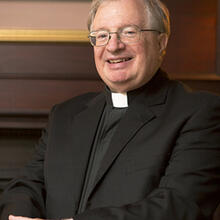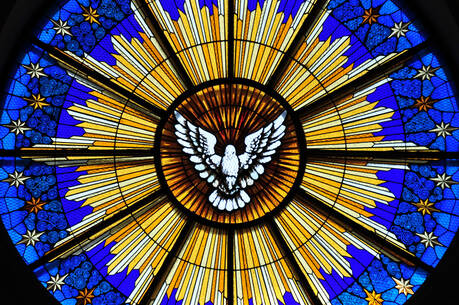One of nature’s ironies is that when it comes to wildflowers, the semi-arid West, even the desert Southwest in springtime, outdoes the green-forested East. I am told the secret is sunlight. The open forests and high meadows of the Sierra Nevada or Colorado’s San Juan Mountains seem to sprout color from every crack in the earth. Though my brother Phil, an environmental engineer, tells me he has seen pastures in central New York carpeted with color, I cannot recall ever having found any scene in the East to compare with sights in the West.
In California, gold is spread deep, even in hot, open landscapes, by some 30 varieties of mustard. Legend has it that the early Franciscans, as they moved from mission to mission, seeded mustard along their trail to mark what later was known as the Camino Real. Now mustard is as ubiquitous as lavender in Provence. During a 30-day retreat in 1986, I tried to learn the names of just the varieties that inhabited Tilden Park, a regional preserve on the crest of the Berkeley hills, but I failed miserably.
It was in Yosemite that I first really began to learn my wildflowers from Don Gelpi, our Jesuit wilderness guide. His memory for wildflowers is prodigious. The one exception are whites. Perhaps he found them uninteresting, but his list seems to run out after daisies, white asters and yarrow. I once asked him why. He said, “There are just too many to learn.”
For myself, I had special difficulty learning the violet-colored flowers. For that reason, I took great pleasure a few years ago in leading Don to a field of shooting stars, a deep purple flower whose downward facing point is trailed comet-like by four or five skyward trailing leaves. I had prayed a couple of days in solitude alongside a pond adjacent to the meadow. Don was looking for somewhere different to pray. When we arrived at the site, he was delighted. Never had he seen as many shooting stars in one place. He sat there the whole day long, as if in the Elysian fields, praying and journaling.
Even though the brightest flowers often grow in hot, dry soil, wildflowers flourish best in moist land. One September, when several of us took a pre-semester backpacking trip, we were astonished by the gardens of flowers we found at the relatively low altitude of 7,000-8,000 feet. It had been a rainy, El Niño year, and the snowpack lay on the ground until late summer. The sure sign of the recent melt were the snowplants, red, fat, asparagus-like spears, which make their appearance with the last remaining snow.
In hotter seasons, I have been astonished upon finding an abundance of wildflowers wherever there are seeps and springs. At the end of one backpacking vacation, we put down camp at Red’s Meadow, a campground on the eastern side of the Sierra. We were looking forward to soaking in the area’s hot springs, but to our surprise we discovered the usually drier eastern slope was a watershed, hosting dozens of varieties of wildflowers. Another summer I was the guest of Dr. Sam and Mary Abu Ghazaleh at their cabin in the Black Hills. The place, well named Seven Springs, was home to an astonishing range of flowers. Most remarkable were the wild roses. I was used to seeing an odd plant or two here or there along a trail, but at Seven Springs dozens and dozens were to be found.
Why do wildflowers draw me so? Especially considering that my memory frequently fails me, and I return from a walk to consult a field guide, often to no avail. The color and variety, and sometimes the fragrance, fill the senses. Their combination of fragility and hardiness offer a lesson in existentialism; but they can also instruct us in the tranquil beauty at the heart of things.
One July I was camped with Dan Groody, C.S.C., at Triple Ute Pass in the San Juans near the headwaters of the Rio Grande. The monsoons came three weeks early that year, and it seemed we did much of our retreat inside our tent. Because of the danger of thunderstorms we learned to stick close to camp. One morning I seated myself on a rock ledge just above a slope cascading with color. The choice of a text came naturally: Luke 12:28-29, “the lilies of the field.” It turned out to be a memorable hour of prayer, blessed with an extraordinary sense of peace that brought many graces in the hard year to follow.
The tranquility wildflowers embody continues to draw me, as it does others. Whether it is the simple peacefulness of the scene, the gentle existence of the flowers themselves, the quiet that comes in their study or the holy peace for which they can be an occasion, they are balm for the soul.








